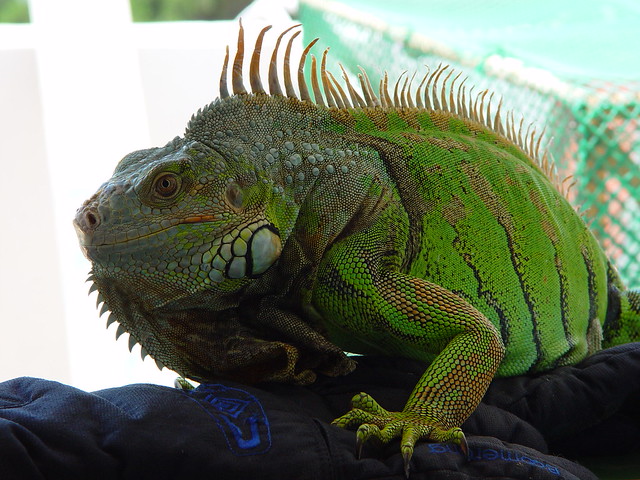 |
| A Moon Jellyfish. (Photo credit: Wikipedia) |
Moon jellies are the easiest jellyfish to keep alive in captivity. This is because of their diversity in nature. Moon jellies can be found in almost every ocean in the world. Their natural habitat stretches from the equator as far north as 70 latitudes and as far south as 40 in every ocean that falls within those geographic parameters.
They are prominent in the shallow coastal waters of estuaries and harbors which explains their abundance in what is still an infant branch within the larger saltwater aquarium trade industry. Because they are common in both temperate and tropical water, they can tolerate temperature ranges anywhere between 42-88 F (6-31 C). Although they can survive in brackish water, a salinity level (specific gravity) of 1.023 will mimic their native marine environment.
The name moon jellyfish is purely descriptive. They are named for the most prominent part of their anatomical makeup, their large disk or full moon shaped bell. They can be further distinguished by the four horseshoe-shaped gonads at the center of their bell. These reproductive organs resemble the craters found on the moon. These fish are very popular as pets because they are transparent and will appear to glow in whatever color is shined through them. They look particularly stunning in an aquarium with an LED fader system set up in it.
Another point in their favor is that their stinging cells do not produce enough pressure to pierce human skin. In the wild, a moon jelly's life cycle is limited to one year from start to finish. In captivity, they can easily live up to three years. These jellies can grow up to one foot in diameter.
Another point in their favor is that their stinging cells do not produce enough pressure to pierce human skin. In the wild, a moon jelly's life cycle is limited to one year from start to finish. In captivity, they can easily live up to three years. These jellies can grow up to one foot in diameter.
In nature, moon jellies spend most of their time drifting on currents rather than swimming. In captivity, they will require an aquarium with a well-designed turbulence system to keep them from becoming a helpless ball of gelatinous goo at the bottom of your tank.
There are currently two retailers in the United States that sell moon jellies. Although moon jellyfish can tolerate a wide temperature range, 77 F is most conducive to their adult phase of life. Moon jellies typically arrive ranging from 2-4 inches in diameter. Their growth rate and maximum disc size are proportional to their caloric intake. This means that they may never grow to their maximum disc size of 12 inches in an aquarium. You can, in fact, prevent them from doing so if you wish to keep them in a smaller aquarium. Depending on their size, moon jellies can be fed brine shrimp, feeder shrimp or feeder fish. There is also commercially available frozen jellyfish food created from zooplankton. This frozen preparation will provide them with all the nutrients they need to keep them alive and healthy.
Moon jellies look absolutely amazing with an array of fading LEDs shining through them. You can now buy a Jellyfish Fish Tank Aquarium to raise your own pet jellyfish in. You can even light them up just like they are in the big public aquarium jellyfish exhibits.
Moon jellies are by far the most easily obtainable jellyfish on the market. Moon jellyfish are even being tank raised to supply the rising demand of home aquarium owners. Learn more about Moon Jellyfish and other Pet Jellies.
|





